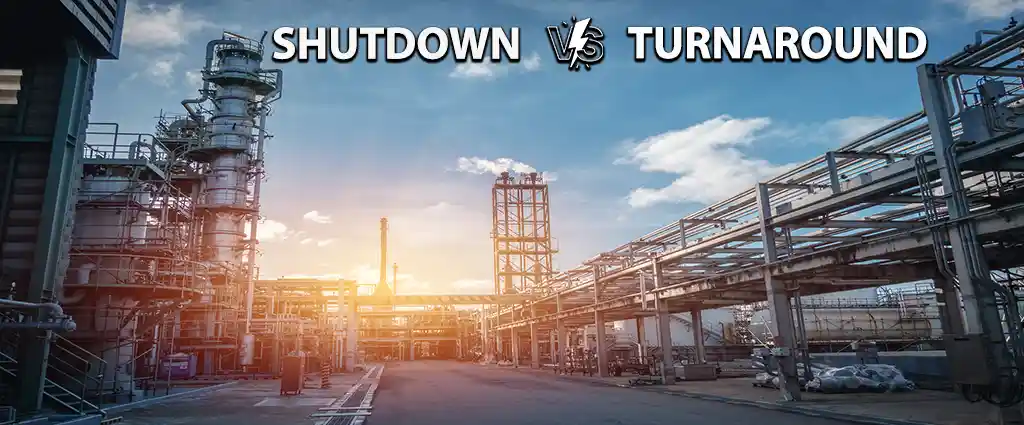Shutdown
A shutdown in the oil and gas industry is a temporary cessation of production or operations for a specific reason. Shutdowns can be planned or unplanned.
Planned shutdowns are typically scheduled for maintenance or inspection purposes. They may also be necessary to make changes to equipment or facilities. Unplanned shutdowns can be caused by a variety of factors, such as equipment failure, power outages, or natural disasters.
Turnaround
A turnaround in the oil and gas industry is a planned, periodic shutdown of a refinery or petrochemical plant for the purpose of maintenance, inspection, and repair. Turnarounds are typically scheduled every few years and can last for several weeks or even months.

During a turnaround, all equipment and facilities are inspected and repaired, or replaced if necessary. Turnarounds are also an opportunity to make changes to equipment or processes to improve efficiency or safety.
Differences between shutdowns and turnarounds
The main difference between a shutdown and a turnaround is that shutdowns can be planned or unplanned, while turnarounds are always planned. Turnarounds are also typically more complex and time-consuming than shutdowns.
Another difference is that shutdowns are typically carried out by the plant’s own maintenance staff, while turnarounds may involve contractors from outside the company (Read more)
